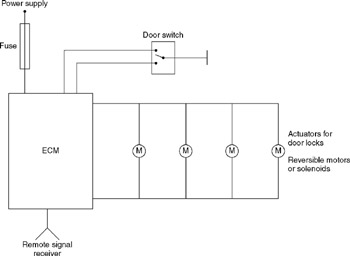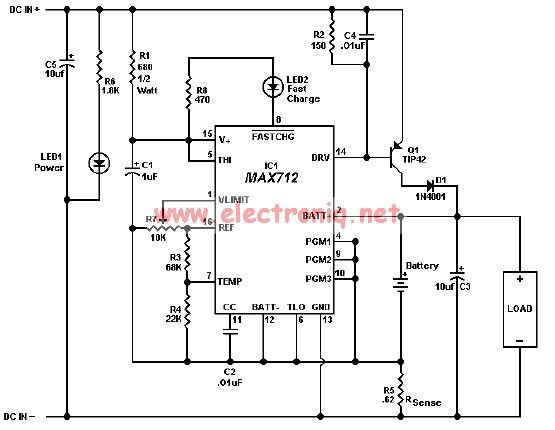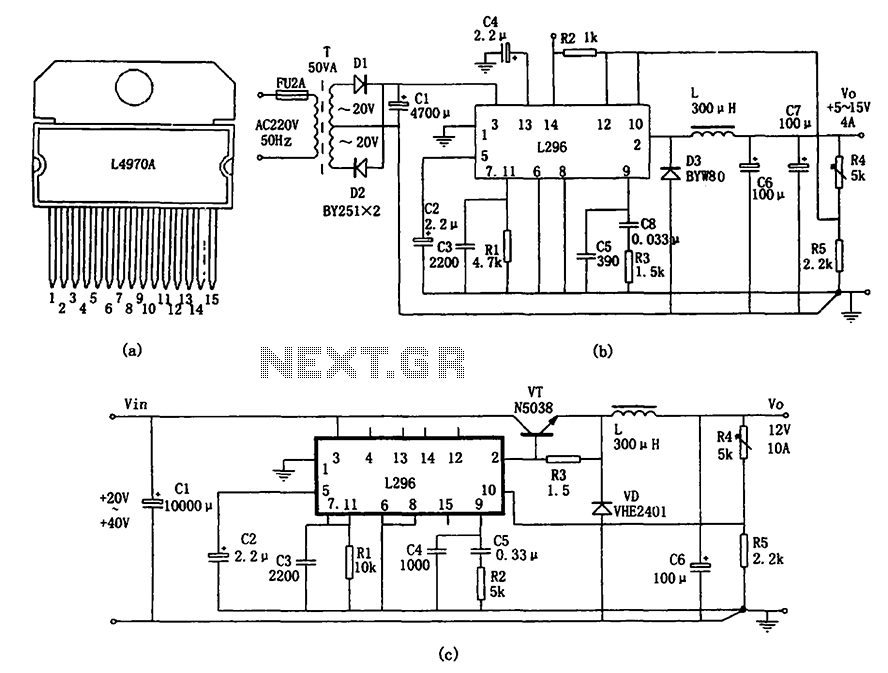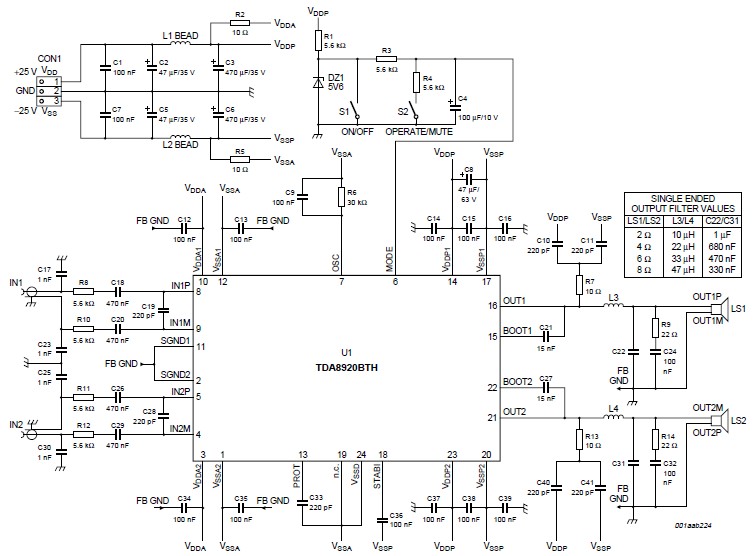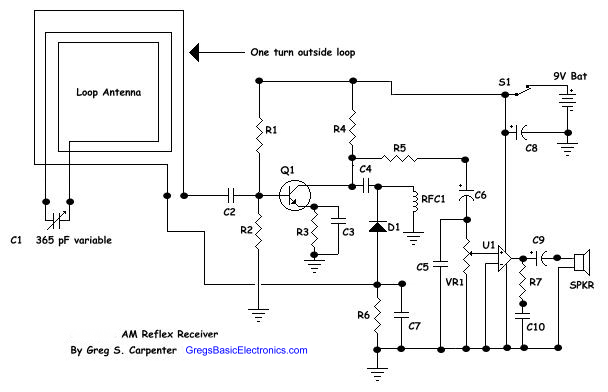
Light Sensor Switch Circuit
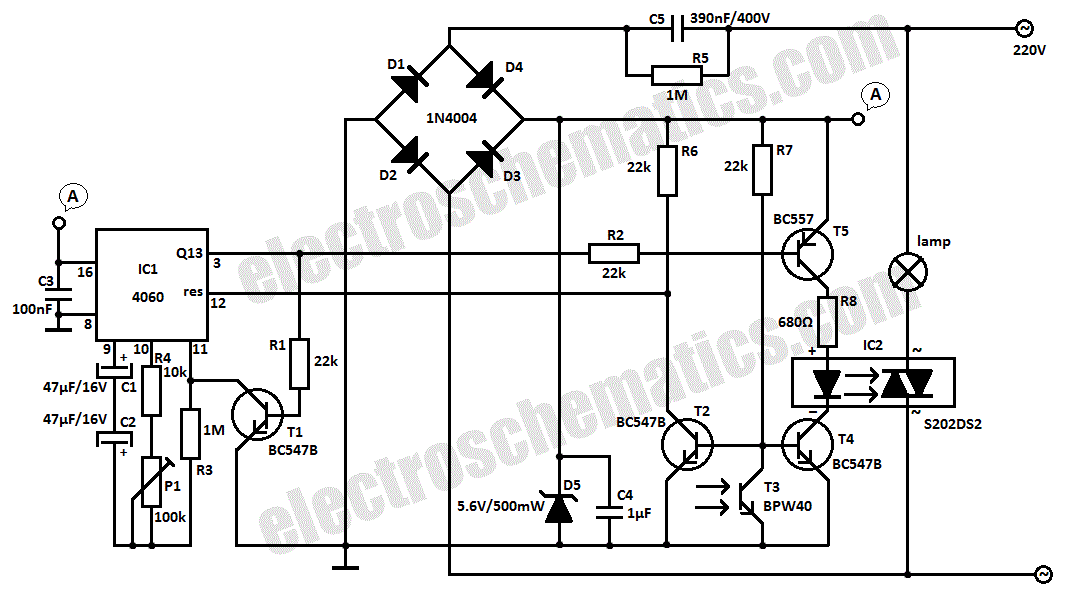
This light sensor switch circuit enables the automatic activation of a lamp when ambient light levels are low (such as during nightfall) and keeps the lamp illuminated for a specified duration. When transistors T4 and T5 are activated, the relay's LED lights up, powering the lamp. If either transistor becomes inactive, the lamp will turn off. The phototransistor T3 will inhibit T5 when light is detected on T3. The base-emitter junction of T2 is connected in parallel with T3, meaning T2 will remain inactive as long as light is present. T2 continuously resets IC1, keeping its counter outputs at a low state. As night falls, resistor R7 provides base current to T2, allowing the transistor to conduct. This enables the counter to begin counting pulses from the internal oscillator, keeping the lamp lit during this time. After a set duration, when the output of Q13 changes to a high state, T4 becomes inactive, which turns off the relay's LED and the lamp. The circuit does not require an external power supply, as it is powered directly from the 220V mains. Diodes D1 to D5 rectify the voltage, and capacitor C4 filters it.
The light sensor switch circuit operates on a straightforward principle, primarily utilizing transistors and a relay to control the lamp based on ambient light conditions. The circuit is designed to function effectively without an external power source, drawing energy directly from the mains supply, which simplifies installation and reduces the need for additional components.
The main components include the phototransistor T3, which acts as the light sensor, and the transistors T2, T4, and T5, which facilitate the switching mechanism. When the ambient light falls below a certain threshold, T3 conducts, allowing current to flow and enabling T5 to activate. This, in turn, energizes the relay, causing the lamp to turn on.
Resistor R7 plays a crucial role in the circuit by providing the necessary base current to T2 when the light levels are low. This allows T2 to conduct and reset the counter in IC1, which is responsible for timing the duration for which the lamp remains on. The internal oscillator within IC1 generates the timing pulses that dictate how long the lamp stays illuminated after T2 is activated.
The transition from the lamp being on to off is controlled by the output state of Q13. Once the counter reaches a predetermined count, Q13 outputs a high signal, which blocks T4, deactivating the relay and turning off the lamp. This feature ensures that the lighting is only active when needed, contributing to energy efficiency.
The rectification of the AC voltage is handled by diodes D1 through D5, which convert the 220V AC supply into a usable DC voltage for the circuit. Capacitor C4 smooths out the rectified voltage, providing stable power to the transistors and IC.
Overall, this light sensor switch circuit is an efficient and effective solution for automatic lighting control, leveraging simple electronic components to achieve reliable performance in low-light conditions.This light sensor switch circuit allows the automatic connection of a lamp when the light is low (at nightfall) and will maintain the lamp ON for a certain period of time. From the moment that T4 and T5 are opened, relay`s LED start to light and powers the lamp. As soon as one of the transistors is blocked the lamp will go OFF. The phototransistor T3 will be the one that blocks T5 if there is light that falls on T3. The T2 ²s base-emitter junction is connected in parallel with T3 and so will be blocked as long there is light. T2 will continuously reset IC1 whose counter outputs will be in 0 ³ state. When the night falls R7 provides base current for T2 and the transistor starts to conduct. The counter can now starts to count the impulses from the internal oscillator and in this time the light will bulb will stay lit.
After a time, when the output of Q13 goes in state 1 ³ T4 is blocked. This causes the relay`s LED to go off and the lamp too. There is no need for external power supply because the light sensor switch is powered directly from the 220V mains. D1 D5 diodes rectifies the voltage and C4 filters it. 🔗 External reference
The light sensor switch circuit operates on a straightforward principle, primarily utilizing transistors and a relay to control the lamp based on ambient light conditions. The circuit is designed to function effectively without an external power source, drawing energy directly from the mains supply, which simplifies installation and reduces the need for additional components.
The main components include the phototransistor T3, which acts as the light sensor, and the transistors T2, T4, and T5, which facilitate the switching mechanism. When the ambient light falls below a certain threshold, T3 conducts, allowing current to flow and enabling T5 to activate. This, in turn, energizes the relay, causing the lamp to turn on.
Resistor R7 plays a crucial role in the circuit by providing the necessary base current to T2 when the light levels are low. This allows T2 to conduct and reset the counter in IC1, which is responsible for timing the duration for which the lamp remains on. The internal oscillator within IC1 generates the timing pulses that dictate how long the lamp stays illuminated after T2 is activated.
The transition from the lamp being on to off is controlled by the output state of Q13. Once the counter reaches a predetermined count, Q13 outputs a high signal, which blocks T4, deactivating the relay and turning off the lamp. This feature ensures that the lighting is only active when needed, contributing to energy efficiency.
The rectification of the AC voltage is handled by diodes D1 through D5, which convert the 220V AC supply into a usable DC voltage for the circuit. Capacitor C4 smooths out the rectified voltage, providing stable power to the transistors and IC.
Overall, this light sensor switch circuit is an efficient and effective solution for automatic lighting control, leveraging simple electronic components to achieve reliable performance in low-light conditions.This light sensor switch circuit allows the automatic connection of a lamp when the light is low (at nightfall) and will maintain the lamp ON for a certain period of time. From the moment that T4 and T5 are opened, relay`s LED start to light and powers the lamp. As soon as one of the transistors is blocked the lamp will go OFF. The phototransistor T3 will be the one that blocks T5 if there is light that falls on T3. The T2 ²s base-emitter junction is connected in parallel with T3 and so will be blocked as long there is light. T2 will continuously reset IC1 whose counter outputs will be in 0 ³ state. When the night falls R7 provides base current for T2 and the transistor starts to conduct. The counter can now starts to count the impulses from the internal oscillator and in this time the light will bulb will stay lit.
After a time, when the output of Q13 goes in state 1 ³ T4 is blocked. This causes the relay`s LED to go off and the lamp too. There is no need for external power supply because the light sensor switch is powered directly from the 220V mains. D1 D5 diodes rectifies the voltage and C4 filters it. 🔗 External reference
Warning: include(partials/cookie-banner.php): Failed to open stream: Permission denied in /var/www/html/nextgr/view-circuit.php on line 713
Warning: include(): Failed opening 'partials/cookie-banner.php' for inclusion (include_path='.:/usr/share/php') in /var/www/html/nextgr/view-circuit.php on line 713
